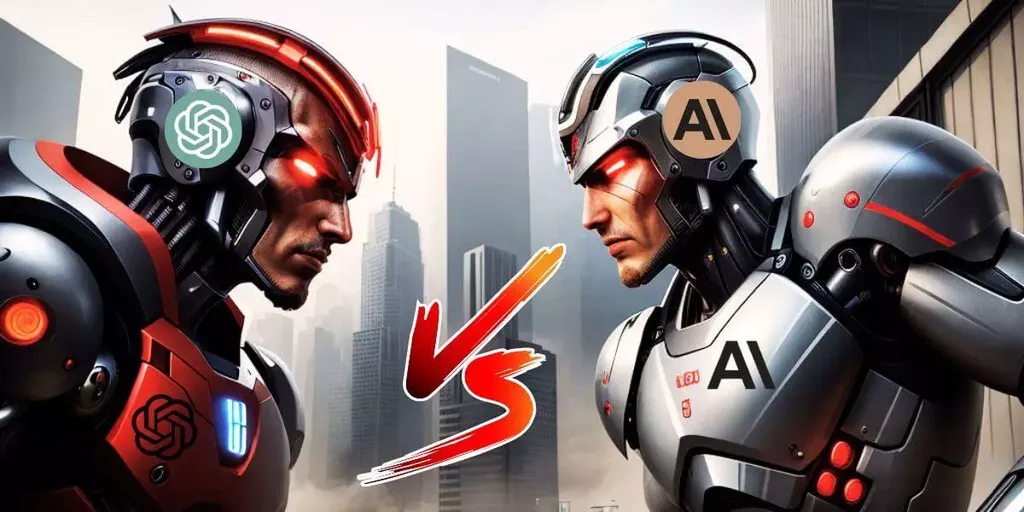The explosive growth of chatbots and conversational AI tools has ushered in a new era of natural language processing. Two of the most buzzworthy and capable systems to emerge recently are Claude AI and ChatGPT. Both showcase remarkable human-like conversational abilities, but take different approaches. In this article, we’ll do a deep dive into how these two headline-grabbing artificial intelligence tools compare.
Claude AI
Claude is an AI assistant created by Anthropic to be helpful, harmless, and honest. The goal is to enable natural conversations that avoid simply regurgitating pre-programmed responses. Claude has been trained on massive datasets to build an understanding of natural language and common sense.
Specifically, Claude leverages Constitutional AI, Anthropic’s proprietary AI safety technique. This involves training Claude not just to have conversations, but to have appropriate, ethical, and harmless conversations aligned with human values. Constitutional AI draws on user feedback and techniques like self-supervision to shape the assistant’s behavior.
Claude utilizes advanced natural language processing to parse text, understand conversational context and intent, and generate coherent responses. In tests, Claude has shown an impressive ability to remember context, refer back to previous statements, ask clarifying questions, and admit knowledge gaps when appropriate. The result is dialogue that feels significantly more natural and genuine compared to previous chatbots.
Early users have been impressed by Claude’s nuanced conversational abilities across a range of subjects, along with its creativity, empathy, and even use of humor when suitable. While not perfect, Claude represents a major step towards conversational AI systems that can have thoughtful, meaningful dialogues like humans.
ChatGPT
ChatGPT is an AI chatbot launched by OpenAI and quickly met with viral popularity. It leverages a cutting-edge AI technique called generative pre-training that involves training machine learning models on massive datasets.
The key innovation is that ChatGPT is trained to predict the next word in a sequence rather than being programmed with rules. It analyzes the patterns in huge corpuses of text including books, websites, and conversations to learn how humans communicate. This allows ChatGPT to generate remarkably human-like text on virtually any topic when given a prompt.
A defining characteristic of ChatGPT is its eloquent, conversational tone and ability to respond to follow-up questions and adapt based on new information. In a blind test, many humans find its writing indistinguishable from that of a person. It displays versatility across formats like articles, poems, code, and dialogue.
However, as an AI trained on public internet data, ChatGPT does have flaws like generating misinformation, exhibiting bias, and struggling with advanced logical reasoning. While its skills are imperfect, ChatGPT offers a glimpse at the potential of generative AI to automate human-like text generation.
Comparing the Technology
Under the hood, Claude AI and ChatGPT represent fundamentally different approaches to conversational AI:
- Claude relies on rules-based deep learning to parse language and directly generate responses based on understanding context. ChatGPT utilizes generative pre-training to predictively model word patterns from datasets.
- Claude focuses narrowly on dialogues, while ChatGPT models many formats like articles, stories, translations, and more.
- Claude incorporates AI safety practices like Constitutional AI to align its responses with ethical human values. ChatGPT has fewer safeguards against generating harmful, biased, or untrue information.
- Claude aims for original, substantive responses through language understanding. ChatGPT often repackages information in eloquent but derivative ways.
- Claude claims a more consistent point of view and personality for coherence, while ChatGPT’s persona can vary wildly based on the prompt.
Use Cases
Due to their differing capabilities, Claude and ChatGPT are suited to different use cases:
- Claude excels at being an AI assistant for genuine conversations and multi-turn dialogues. Its ability to maintain context makes it more useful for emulating human chat.
- ChatGPT shines at creatively generating human-like text for a one-off prompt. It produces remarkably eloquent language across diverse writing formats.
- For now, Claude appears more promising for uses like medical, legal, or academic domains where accuracy and ethical stances are critical.
- ChatGPT’s flair for mimicking human writing makes it better for uses like assisting with content creation or even as a co-author. But quality control is required.
- Neither is yet reliable enough for high-stakes applications like medical diagnosis or financial advice, but both point to the future possibilities of AI.
Limitations and Concerns
While Claude and ChatGPT represent huge leaps in automatic text generation, they also face significant limitations:
- The lack of true comprehension of language remains an obstacle for rich dialogue. Errors can emerge, especially with complex reasoning.
- There are concerns about potential bias, toxicity, and misinformation without proper safeguards in the training data and algorithms.
- Over-reliance on tools like ChatGPT could facilitate laziness, plagiarism, and the spread of misinformation if users treat the outputs as ground truth.
- Existing biases and inaccuracies in the model training data can be propagated, amplified, and exploited if not properly addressed.
The Future
Claude and ChatGPT provide an exciting glimpse at the trajectory of conversational AI, but still represent early steps. As models continue training on more data, incorporating real-world knowledge, and leveraging new techniques, the technology will grow more powerful. In time, we may see AI assistants capable of truly thoughtful, open-ended dialogue like humans. But responsible development practices will be critical for avoiding risks as these systems grow more advanced and autonomous.
For now, Claude AI and ChatGPT stand as two of the most versatile, human-like conversational AIs yet developed. Testing the clever responses of Claude or creative flourishes of ChatGPT gives us a hint of humanity’s potential future alongside increasingly intelligent machines. But realizing that potential in an ethical, beneficial way will require wise stewardship of this transformative technology.


Leave a Reply